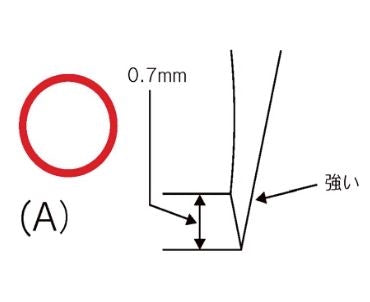Japanese Knife Maintenance Guide
For all of our artisan Japanese kitchen knives we recommend hand washing with warm water, please remove the moisture well with a dry towel. Please do NOT use a dishwasher. If you do not use for a long time please wrap with newspaper as that keeps moisture from the blade. We highly recommend applying Tsubaki Camellia oil (to protect against any rust, corrosion and discoloration) lightly and store in a place with less humidity when storing knives. Using a knife protector or saya (sheath) is also recommended to protect the blade while being stored. Even while in use, please be careful as rust may occur when left with moisture.
Looking to refresh your wooden handle? Try applying a lite coat of edible mineral oil (found in most local drug stores) to it. We recommend leaving it on for 30 minutes to soak in and then removing any excess with a towel or rag.
Please do not cut bone or frozen food. It may cause the knife to chip.
*Available upon request order
Once you have a favorite Japanese knives, lets' sharpen them with a whetstone. It will last longer than an electric Knife Sharpener or a honing rod. Do you think it is difficult to use whetstone? Don't worry, actually, it is not so difficult. If you don't feel comfortable sharpening a knife, knife sharpening services are available and often have a mail in option.
HOW TO SHARPEN A BLADE WITH A WHETSTONE
Please note, be very careful when sharpening as it is possible to slip or lose your grip.

(1) First soak the sharpening stone. Most stones should be soaked between 10-20 minutes. Specialized stones will require varying soak times or none at all.
(2) Grip the blade firmly (see picture). With the blade facing you and using your right hand, hold the handle of the blade comfortably, yet firmly. With your left hand, use 2-3 fingers on the blade approximately 2-3 cm above the blade edge. Press down to find the angle of the cutting edge on the blade so that it is flat on the stone.
(3) Firmly push the blade upwards then lightly pull the blade back downwards. Use firm and smooth strokes for each movement. Be sure to hold the blade at the same angle on every stroke. After about 3-5 strokes, move the blade slightly over and sharpen the next area of the blade. Repeat until the entire blade is sharpened.
(4) When done, there will be a rough edge (called the "burr") on the backside of the blade that needs to be smoothed off. Turn the blade over and lay it flat on its cutting edge against the stone. Firmly push the blade upwards. Release pressure on the down stroke and continue for the entire length of the knife.
SHARPENING WESTERN STYLE KNIVES


Hold the knife at a 60-70 degree angle when sharpening.
Hold the blade between 10-20 degrees above the stone.
When sharpening a double edged knife with equal cutting angles, make sure to sharpen both sides equally. The sharpening edge is 2-5 mm from the tip of the knife.
When sharpening a single edged knife, make sure to sharpen only 2-5 mm from the tip of the knife.
SHARPENING THIN JAPANESE STYLE KNIVES




Be careful not to over grind the back edge of the knife. Doing so will flatten the curve. This will permanently damage your knife.
SHARPENING THICK JAPANESE STYLE KNIVES
Deba and Yodeba blades are designed to cut thick foods (meat, bones, etc.) and must be sharpened differently from Yanagi-like blades.
The cutting edge must be sharpened at a wider angle. Too thin of an angle (like the Yanagi blades) will cause the blade edge to chip when cutting.
Things NEVER to do when sharpening
DO NOT use hard cutting boards with Honyaki knives as this will dull or chip the blades very easily. Always use soft cutting boards.
Laying a blade flat and sharpening both sides will permanently weaken the blade, causing it to break and chip easily.







